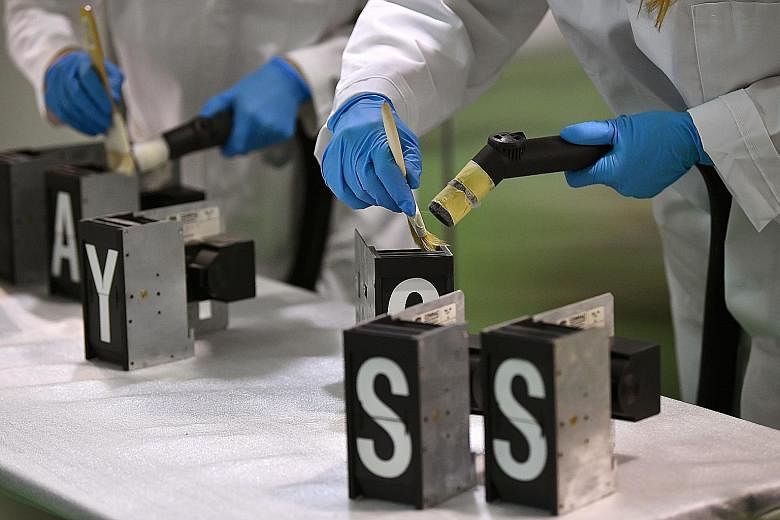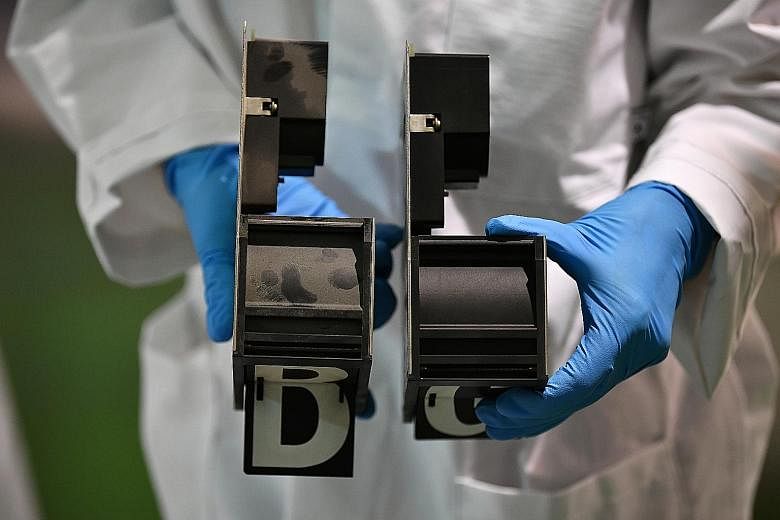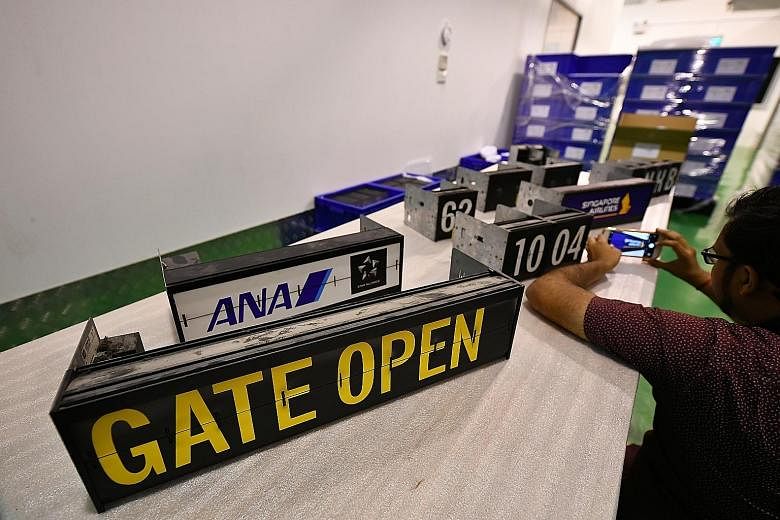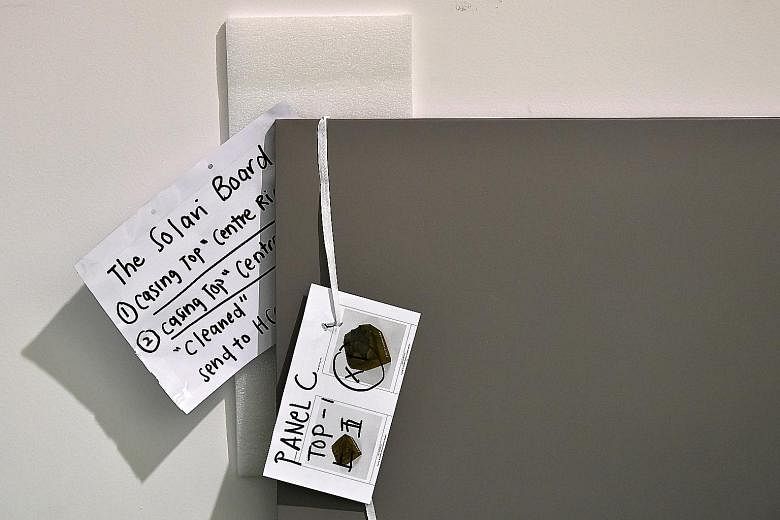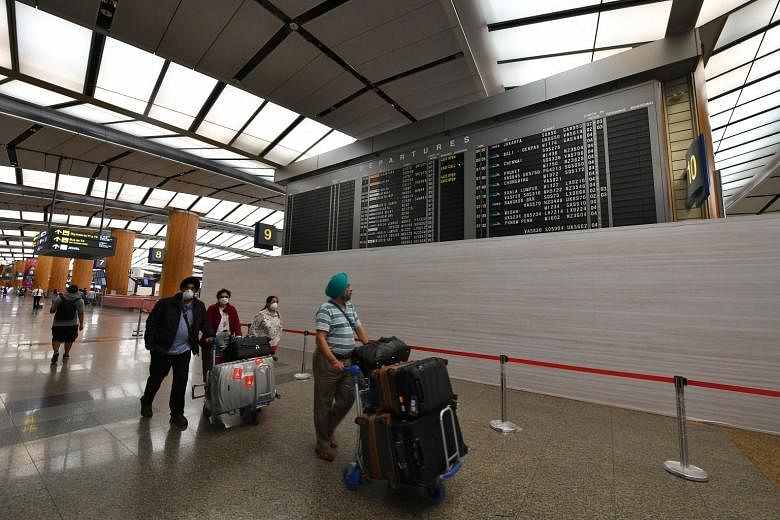Dust has been accumulating on the old flight information display flip board but that did not deter Ms Birte Koehler, with her brush and handheld vacuum cleaner.
Ms Koehler, the senior object conservator at the Heritage Conservation Centre (HCC), is among three experts tasked with cleaning one of two boards that used to tower over departing passengers at Changi Airport's Terminal 2 (T2). The other board will be retired in about two years' time.
The analogue boards have had their day, given the challenges of maintenance and growing difficulties in procuring replacement parts. Even the firm that made T2's archaic boards in 1999 had ceased production of the components.
Electronic displays can show far more flight details than the analogue ones in T2, and they take less time and manpower to maintain.
Each analogue board measures 4.5m in height and 15m in length, and comprises over 2,000 capsules of individual letters and numbers.
The flip boards deviated from their usual role of presenting flight details in 2016 when they celebrated swimmer Joseph Schooling's Olympic victory by displaying his winning time.
About 20 people were involved in de-installing the flip board over the past two weeks. The pieces are undergoing cleaning and packaging at the Global Specialised Services Warehouse. They will then be transferred to the HCC, which is a part of the National Heritage Board, to join Singapore's National Collection.
Mr Alvin Tan, the National Heritage Board's deputy chief executive for policy and community, said: "We believe that (the board) is an important piece of airport infrastructure and a formative feature of the air travel experience. Many Singaporeans will remember standing underneath the boards, listening to the clickety-clack sounds of the split flaps and waiting for their flight information to be displayed."
On challenges faced by the conservators, Mr Tan said the process is time-consuming as there are over 2,000 components to be cleaned. "We also have to take a lot of care, because some of the components are quite fragile and replacement parts might not be easily found."
A single module takes two to five minutes to be thoroughly cleaned.
Ms Koehler said the repetitive process of cleaning the modules in a similar fashion over an extended period allows her to get into a quiet rhythm and "it becomes a meditative process".
The entire cleaning process is estimated to take six months.
